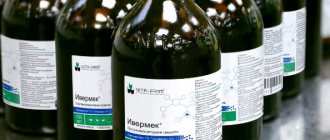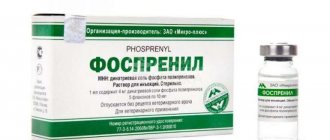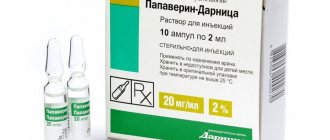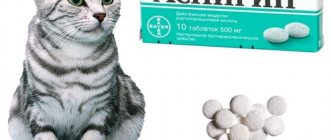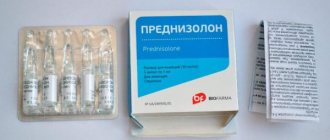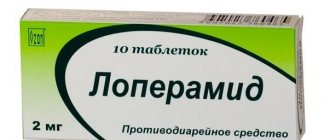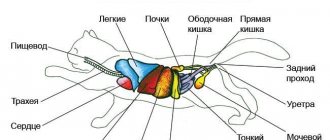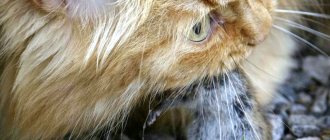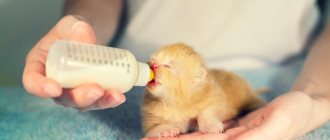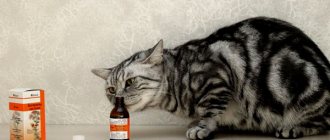Purpose of the drug
The drug "Ivermek" is prescribed to cattle, goats and sheep, deer and horses, pigs, camels, cats and dogs if they have:
- gastrointestinal and pulmonary forms of helminthiases, including metastrongylosis, dictyocaulosis, trichostrongylatosis and ascariasis, strongyloidiasis and esophagostomiasis, oxyuratosis, trichocephalosis and bunostomiasis;
- ocular nematodes, including thelaziosis;
- hypodermatosis and estrosis (nasopharyngeal and subcutaneous gadfly);
- psoroptic mange and sarcoptic mange (scabies);
- demodicosis;
- siphunculatosis (lice);
- mallophagosis.
If the treatment regimen and dosage are followed, Ivermek shows activity against any form of parasitic organisms, including adult individuals, as well as their larval stage. The active substance affects the nervous system of parasites, which very quickly causes their death. The administered drug is easily absorbed and then distributed throughout the tissues and organs of the animal.
Regardless of the form of release, the domestic drug “Ivermek” with a unique composition is characterized by an affordable price, the absence of an unpleasant odor, rapid absorption into the blood and uniform distribution throughout the body, as well as a minimal number of adverse reactions.
Return to content
What kind of disease is this
For calves, this disease is dangerous because it inhibits the development of a young body. Individuals stop gaining weight and suffer from disturbances in the functioning of the nervous system. Ringworm is observed in 99% of the cattle population. Moreover, the pathogen that causes the disease is resistant to external factors and can remain viable for 8 years in a favorable environment. Therefore, in order to prevent re-infection of livestock, when the animals are completely cured, complete disinfection of the premises must be carried out.
Cattle lichen has another name - trichophytosis. This disease manifests itself when the skin is damaged by pathogenic microorganisms of a fungal nature. The infection can be transmitted to all inhabitants of the livestock farm, including cows. It is important that this pathology can also affect humans. In other words, an animal can catch a disease and then infect its owner, or in the reverse order. In addition, transmission to other farm animals living in the barnyard is possible.
The causative agent of lichen (trichopytosis) is two types of fungal microorganisms, called microsporum and trichophyton. These pathogens are characterized by excellent resistance to external factors and are able to progress in the cellular tissue of the epidermis for about 5 years. And fungal spores remain viable for 8 years in rooms where animals are kept or the surfaces of feeders.
Under favorable conditions, a fungus develops from spores, which subsequently affects the skin of the cow. For this reason, an important condition when keeping cattle is regular disinfection of all equipment to protect the barnyard from infection with all kinds of diseases, including trichophytosis.
Adult cows tolerate this disease more easily than calves, since lichen can have a negative impact on the growth and development of animals. In the absence of timely assistance and adequate therapy, under the influence of trichophytosis, livestock is depleted, and a decrease in the productivity of cows is also observed.
There are several varieties of lichen according to the pathology:
- bubbly;
- superficial;
- deep (follicular);
- erased.
The incubation period is sometimes about 30 days, so it is quite difficult to detect the disease in a cow at an early stage. Trichophytosis in young cattle appears in the muzzle area, and in mature animals in the chest, neck, and inner thighs. In calves, a deep form of lichen is often determined, and in adult bulls and cows, it is erased.
Composition, release form
The drug "Ivermek" is available in the form of an injectable sterile solution, as well as in the form of a gel intended for oral use. The basis of the complex drug, which has a systemic effect, is a unique combination of active ingredients. Moreover, one milliliter of the product contains 40 mg of tocopherol acetate (vitamin E) and 10 mg of ivermectin, which are supplemented with dimethylacetamide, polyethylene glycol-660-hydrokeistearate, water for injection and benzyl alcohol.
The injection solution is a transparent and colorless, opalescent liquid with a slight specific odor. The antiparasitic drug is packaged in glass bottles of various sizes, sealed with rubber stoppers and aluminum caps. Ivermek product in volumes of 400 and 500 ml, as well as 1 liter, is sold in polymer bottles, which are sealed with convenient plastic caps. The drug is well excreted in bile and urine, and during lactation – directly in milk.
A drug for the destruction of a very wide range of pathogens of serious diseases is prescribed by a veterinarian, taking into account the severity of the disease, in the form of injections, as well as a spray, gel or special solution.
Return to content
Pharmacological properties
Pharmacologists classify ivermectin into two groups: firstly, it is an anthelmintic agent, and secondly, it is a local anti-inflammatory.
Ivermectin affects the movement of chlorine ions, namely increases the permeability of the muscles and nerves of the parasite to it. Under the influence of the drug, gamma-aminobutyric acid is excessively released in the body of the parasite, as the inhibitory mediator GABA stops the transmission of impulses in the nerves. This paralyzes the parasite, causing the pest to die.
After the injection, it begins to act within an hour
When administered by injection, ivermectin is rapidly absorbed and distributed throughout the animal’s body. Both with injections and in the case of feeding, the effect of the substance begins within an hour. The antiparasitic effect lasts from 10 days to two weeks.
When a solution or spray is applied to the skin, ivermectin enters the body of exoparasites and has the same effect. In addition, it is absorbed into the skin and, firstly, relieves inflammation caused by parasites, and secondly, it penetrates the tissue and causes the death of parasites inside the animal.
In recommended doses it has low toxicity. Ivermectin is excreted in urine, bile and milk, and in birds – in droppings.
Instructions for use
The drug is administered with mandatory adherence to the rules of asepsis and dosage regimen, intramuscularly:
- cattle, including calves, sheep and goats, camels and deer when getting rid of nematodes, hypodermatosis, esterosis and sarcoptic mange - once at the rate of 1 ml per 50 kg of weight. Severe forms of the disease require repeated administration of the drug after 7-10 days;
- horses - in the treatment of trongylatosis, parascariasis, as well as oxyurosis, sarcoptic mange and gastrophylosis, the drug is administered once at the rate of 1 ml per 50 kg of body weight. Severe forms of the disease require repeated administration of the drug after 7-10 days;
- piglets and adult pigs when getting rid of ascariasis, esophagostomiasis, trichuriasis, stephanurosis, sarcoptic mange, lice - 1 ml of the drug is administered once per 33 kg of weight. If the severity of the disease is significant, the drug is administered twice;
- cats, dogs and rabbits - in the treatment of toxocariasis, toxascariasis, uncinariasis, sarcoptic mange, otodecosis and demodicosis, the drug is administered at the rate of 0.2 ml for every 10 kg of weight;
- farm poultry - when getting rid of ascariasis, heterokidosis and entomosis, the drug is administered at the rate of 0.2 ml for every 10 kg of weight.
To facilitate dosing, diluting the contents of the bottle with special water for injection allows you to dilute it. For piglets, as well as adult pigs, for colitis, the drug is injected into the femoral muscle (inner thigh) and into the neck area. For other animals, the drug must be injected into the neck and croup area. For dogs, Ivermek is injected into the withers, directly into the area between the shoulder blades.
Working with the drug requires strict adherence to all rules of personal hygiene, as well as standard safety precautions provided for in the recommendations for the use of any medicines.
Return to content
Where is trichophytosis most often found?
Fungal bacteria often affect the face, neck and back of cattle. In individuals with a weakened immune system, the disease can spread throughout the body. The mammary glands and limbs become covered with lichen in rare cases.
If a livestock breeder is infected with trichophytosis from pets, characteristic signs appear on the skin of the hands and on the head (in the hair), since these areas of the body are most often in contact with animals. If cows are milked manually, pathogens can easily be transferred to the head from an infected individual.
Precautionary measures
When the recommended dosage is exceeded in dogs, the drug "Ivermec" can initially cause noticeable swelling at the injection site. It is very important to carefully read the instructions supplied with the drug. The drug is not recommended for the treatment of some common dog breeds, including bobtail, collie and sheltie. If the dosage of Ivermec injection prescribed for treatment exceeds 0.5 ml, then the injections must be placed in different places.
The Russian antiparasitic systemic drug "Ivermek", according to the instructions for use and in accordance with the recommendations of veterinarians, must be used strictly under the supervision of an experienced specialist for the treatment of small cats. It is important to remember that medical gloves must be used when working with the medicine. If the medicine gets on the mucous membranes of the eyes, you must immediately rinse them with copious amounts of running water. After the treatment procedure, hands should be washed with soap.
The drug "Ivermek" must be stored in sealed packaging from the manufacturer, necessarily separately from feed and food, in a dry place, protected from light, at a temperature within 0-25°C.
Return to content
Therapeutic measures
Treatment of lichen in cattle requires an integrated approach. The treatment plan is determined by the clinical picture of the disease and the stage of infection by the pathogen, as well as the age of the infected animal. At the initial stage of development of pathology, the use of antifungal ointments and keratolytic drugs is acceptable. If the fungus affects the surface of the cow's body, immunization is added to the treatment. In addition, infected individuals are subject to mandatory isolation.
If, during the development of trichophytosis, a secondary infection is noted, it is necessary to begin treatment of the concomitant pathology.
Before starting treatment with antifungal ointments, it is mandatory to remove dirt, crusts and other factors that interfere with the effect of the active component of the medicine. The effect of the antifungal component will be more effective if the skin of the sick cow is first cleaned, softened and steamed.
Most often, when treating lichen in cattle, the use of the following drugs is recommended:
- Mazi Yam. This is an antifungal agent with antimicrobial and astringent ingredients in its composition. Thanks to these components, the ointment, after treating the affected areas of the cow’s skin twice over the course of a week, allows the crusts to peel off. You can judge that the therapy was effective by how the fur begins to grow back.
- Zoom call. The active ingredient is Thiabendazole, under the influence of which micromycetes stop reproducing. The medicine is released in the form of a spray. It must be sprayed in an even layer in the affected area, covering healthy skin around at a distance of approximately 1-2 cm. Repeated treatment is carried out after 3-5 days. Course therapy involves applying the product 3-4 times.
- Imeverola. The product is a thick yellow-brown concentrate for preparing an emulsion by diluting in warm water in a ratio of 1:5. The resulting medicine should be used within 24 hours. Treatment of trichophytosis involves treating the affected area four times, which is carried out every three days. Initially, the entire surface of the cow’s body is treated with a working emulsion using a sprayer. For an adult, you will need to use more than 1 liter of solution. Subsequently, the damaged area is treated, capturing a strip of healthy skin around it.
- Fungina. The product is produced in the form of a solution or aerosol. The medicine should be used to treat the area affected by trichophytosis, covering nearby healthy tissue every day for 14 days.
The use of antifungal agents is often carried out in combination with drugs from the group of keratolytics. The use of keratolytic agents helps accelerate the rejection of the affected tissue and its replacement with a new one, free from fungal microorganisms. Most often, treatment with the following medications from this pharmaceutical group is recommended for lichen in cattle:
- salicylic acid solution;
- tar ointment;
- 20% copper sulfate;
- tincture of iodine;
- solution of brilliant green (green stuff);
- iodoform;
- sulfur ointment.
Treatment with keratolytic drugs should be carried out alternately with antifungal agents. For example, when trichophytosis in cows is treated at home, you can use ointments or solutions in the morning, and in the evening - means to stimulate the growth of new tissue, or in the reverse order.
Important! When handling infected individuals, operating personnel must wear protective clothing and gloves.
In case of severe pathology, if treatment with external drugs is not effective enough, an antimycotic vaccine is administered for therapeutic purposes. For vaccination against trichophytosis in cows, the drug LTF-130 or another drug is used. The vaccine is administered intramuscularly, and after 14 days re-immunization is carried out. This procedure helps to inactivate the fungus and prevent its subsequent reproduction.
In addition, in order to strengthen the animal’s immune system, treatment with fat-soluble vitamins in injection form - Trivit, Tetravit, etc. can be prescribed. To increase the effectiveness of therapy, it is recommended to adjust the diet by increasing the calorie content of the feed and adding nitrogenous substances. In addition, it is necessary to bring zoohygienic conditions in accordance with the standards.
Sometimes trichophytosis develops as a concomitant disease if the animal’s immune system is weakened by another pathology, which makes the body defenseless to the effects of fungi. In such a situation, the use of medications used to treat the underlying disease (for example, Ivermek) has a positive effect on the skin.
Occasionally, under the influence of micromycetes, the animal’s body becomes defenseless against attack by a carpet beetle mite or a parasitic round worm. In such a situation, Ivermek eliminates the concomitant disease and alleviates the course of lichen.
Against the background of hyperdermatosis, under the influence of the larvae preparing to emerge from under the skin, an inflammatory process develops around the formed fistula. The damaged area is contaminated with fungal microorganisms. In this case, a product based on Ivermectin is used for therapeutic purposes.
Trichophytosis can affect both cattle and other farm animals. Goats, sheep, and horses are susceptible to this disease. In some cases, it is difficult to determine which disease has affected the cow: lichen or dermatitis caused by other factors. In any case, Ivermek will help alleviate the animal’s condition.
Any therapeutic actions will be meaningless if the feeders and premises in which animals are kept are not disinfected. As mentioned above, fungal spores remain viable for several years. To prevent the proliferation of fungal flora, it is imperative to disinfect the tools used when caring for cows and cleaning the barn, containers for food and drink, and all surfaces in the stalls, including the floor and walls.
- 5% formaldehyde solution;
- carbolic solution;
- 20% bleach solution.
To treat premises, a disinfectant solution is taken at the rate of 1 liter per 1 m2 of area.
Contraindications
There are a number of circumstances that exclude the use of this drug. The most important contraindications include the presence of any infectious diseases in animals, as well as their weakened condition. This veterinary drug is not prescribed in the last trimester of pregnancy. The use of Ivermek or its other derivatives for the treatment of dairy animals is not allowed. Particular caution is required when using this product in dogs and cats.
Particular susceptibility and intolerance to the active components of the antiparasitic drug is a reason to choose another drug. In the presence of obvious individual hypersensitivity, symptoms appear, presented by:
- hypersalivation;
- frequent urination and defecation;
- ataxia syndrome.
In most cases, the listed symptoms regress on their own, and therefore do not require dosage adjustment or the prescription of any specific therapy. In conditions of long-term persistence of adverse reactions, in the absence of signs of regression, it is necessary to contact a veterinary clinic for advice.
To avoid the development of negative complex side effects, it is very important to follow the entire list of recommendations contained in the instructions for use of the drug. Meat and dairy products from animals treated with Ivermek are allowed to be used for food purposes four weeks after the administration of the antiparasitic drug. It is unacceptable to use the drug 42 days or more after opening the bottle.
The antiparasitic drug "Ivermek" due to its composition is classified as a moderately dangerous veterinary drug, so immediately before use it is necessary to consult a specialist.
Return to content
Use of folk remedies
In the treatment of trichophytosis, the use of folk remedies is allowed. Let's take a look at some of them:
- To prepare tar ointment, you need to mix tar and Vaseline in a ratio of 1:5. The resulting composition should be applied to the affected areas twice a day.
- Turpentine can be used when making a disinfectant mixture. To prepare such a remedy for lichen, you need to mix tar and turpentine in a 1:2 ratio.
- To prepare another remedy against trichophytosis, you need to take 1 part of copper sulfate and mix with 2 parts of lime and 3 parts of sulfur. The resulting mixture is used to treat damaged areas.
It should be borne in mind that the treatment of this disease requires regular procedures and patience on the part of the staff, since the causative agent of lichen is quite stable. If therapy is carried out at home, manipulations should be continued for another 3 weeks after the characteristic signs disappear.
Side effects
As a result of an unauthorized increase in the dosage of a drug or a change in the course of its use in dogs and cats, the risk of certain side effects increases, expressed in the following symptoms:
- trembling of limbs;
- complete or partial lack of appetite;
- nervous excitability;
- single or repeated vomiting;
- defecation disorder;
- problems with urination.
In this case, it is advisable to refuse to use the drug “Ivermek” and also give preference to its analogues. In veterinary practice today, a large number of medications are used to effectively rid pets and farm animals of parasites. Iversect, as well as the drug Ivomec, have a similar therapeutic effect.
The micellar (water-dispersed) form for getting rid of endo- and ectoparasites is, as a rule, well tolerated by animals, but only if the dosage is observed and the most effective, safe treatment regimen is selected.
Return to content
Ivermek cost
It is recommended to purchase the highly effective antiparasitic drug “Ivermec” in veterinary pharmacies or clinics where this drug is sold under the international name: “Ivermectin 10, Tocopherol”. Depending on the volume and form of release of the veterinary product, the average cost of the drug “Ivermek” today varies from 40 to 350 rubles.
The veterinary drug should be purchased only from trusted retail outlets that cooperate with Nita-Pharm CJSC, which produces Ivermek OR, Ivermek ON, Ivermek-gel, and Ivermek-spray.
Return to content
Reviews about Ivermek
The product for destroying a wide range of pathogens has proven itself well and, as a rule, receives positive feedback from users. Among the main advantages of this drug, animal owners note the ease of use, as well as the variety of convenient packaging forms and the concentration of the active substance, which is high enough for single use. A universal antiparasitic veterinary drug has a complex effect and can also be used not only to effectively treat diseases, but also to prevent their development.
Tests conducted on farm and laboratory animals easily allowed specialists to determine the effect of increased doses of the drug “Ivermek” on the body, including acute and chronic toxicity, as well as the duration of preservation and effectiveness of the concentration of active components in the blood plasma. Intensity efficiency with a single deworming is 97-100%. At the same time, many experts consider the use of the drug “Ivermec” to be preferable to the use of similar products that already exist at the moment.
Veterinarians highlight Ivermek due to its lower toxicity, which is due to the presence of vitamin E in the composition, and also note the quite affordable cost of the treatment regimen with this antiparasitic drug. Among other things, an important advantage of this drug is the possibility of trouble-free intramuscular administration, which is much more convenient than subcutaneous inoculation. The drug has excellent water solubility, providing the most accurate dosing for small animals. If the instructions for use are followed, there is no appearance of irritation in the tissues at the site of inoculation of the administered drug.
Tags: animal diseases, veterinary medicine, ivermek, animal treatment
Restrictions
Ivermectin has earned its reputation as a good remedy for parasites, among other things, due to its long action - the drug is poorly destroyed even at high temperatures, especially in the body, and is eliminated for a long time. The flip side of this coin is the restrictions associated with treated animals.
The medicine is preserved in milk; you should not drink it for four weeks after treatment.
The use of ivermectin causes its accumulation in the tissues and organs of the animal; the antihistamine is found in the milk of dairy animals for a long time. It has a high melting point and, even after heat treatment, remains in products and can enter the human body in pure form or already metabolized, causing unpleasant reactions - allergies, dysbacteriosis.
An animal can be sent for slaughter only after 28 days
In this regard, after injecting the medicine, the animal cannot be sent to slaughter and milked for food purposes for at least 28 days. If slaughter is forced, the carcass can be processed into meat and bone meal or for feeding fur-bearing animals.
Ivermectin ampoules and containers can be neutralized in an autoclave (for 40 minutes at 0.8 atmospheres) or by boiling for an hour. Contaminants are neutralized with a five percent sodium hydroxide solution.
The cost of ivemectin varies greatly due to the wide range of packaging, from 1 to 500 ml. On average, an ampoule, either Russian or imported, for one-time use on pets costs from 50 rubles. You can also buy Ivermek bottled in liter containers from the manufacturer; its price on the Nita-Pharm website is 3,300 rubles (you need to buy at least 8 liters).
Read also: How to cook frozen mushrooms in a frying pan
Did you like the article? Save so you don't lose!
Ivermek (Nita-Pharm) is a complex, highly effective drug that is used in traditional veterinary medicine for the prevention and treatment of parasitic infections in various types of farm and domestic animals. Let's consider at what age Ivermec can be used, where this antiparasitic drug should be injected, and against what diseases it is prescribed.
